Brief CV
B.Sc. (Honours), Department of Physics, Memorial University of Newfoundland (1986)
D.Phil., Atmospheric, Oceanic, and Planetary Physics Group, University of Oxford (1992)
Summer Student / Staff, International Space University (1988 / 1990)
Post-Doctoral Research Associate, Centre for Atmospheric Science, University of Cambridge (1992-94)
Research Associate, Centre for Atmospheric Chemistry, York University (1994-95)
Assistant Professor, Department of Earth and Atmospheric Science (now ESSE), York University (1995-96)
Assistant Professor, Department of Physics, University of Toronto (1996-2001)
Associate Professor, Department of Physics, University of Toronto (2001-2006)
Professor, Department of Physics, University of Toronto (2006- )
Visiting Fellow, Centre for Atmospheric Chemistry, University of Wollongong (2010)
Director, School of the Environment, University of Toronto (2013-2018)
Member, Centre for Global Change Science, University of Toronto
Member, Graduate Faculty, School of the Environment, University of Toronto
Member, Graduate Faculty, Department of Physical and Environmental Sciences, University of Toronto Scarborough
Senior Fellow, Massey College, University of Toronto
Fellow (2014-) and Associate (2018-2024), Trinity College, University of Toronto
Chair, Department of Physics, University of Toronto (2019-2024)
Past-President (2020-2021), President (2019-2020), and Vice-President (2018-2019), Canadian Meteorological and Oceanographic Society
Chair (2021-2024) and Vice-Chair (2020-2021), SNOLAB Institute Board of Directors
Fellow, Royal Society of Canada (2019)
Fellow, Canadian Meteorological and Oceanographic Society (2021)
Recipient, 2021 Patterson Distinguished Service Medal from the Meteorological Service of Canada (2022) A&S News
Recipient, Willet G. Miller Medal in Atmospheric Sciences from the Royal Society of Canada (2022) A&S News
Recipient, APECS International Mentorship Award from the Association of Polar Early Career Scientists and the ArcticNet Student Association (2022) ASM2022
Acting Vice-Dean, Graduate Education, Faculty of Arts & Science, University of Toronto (2025)
|


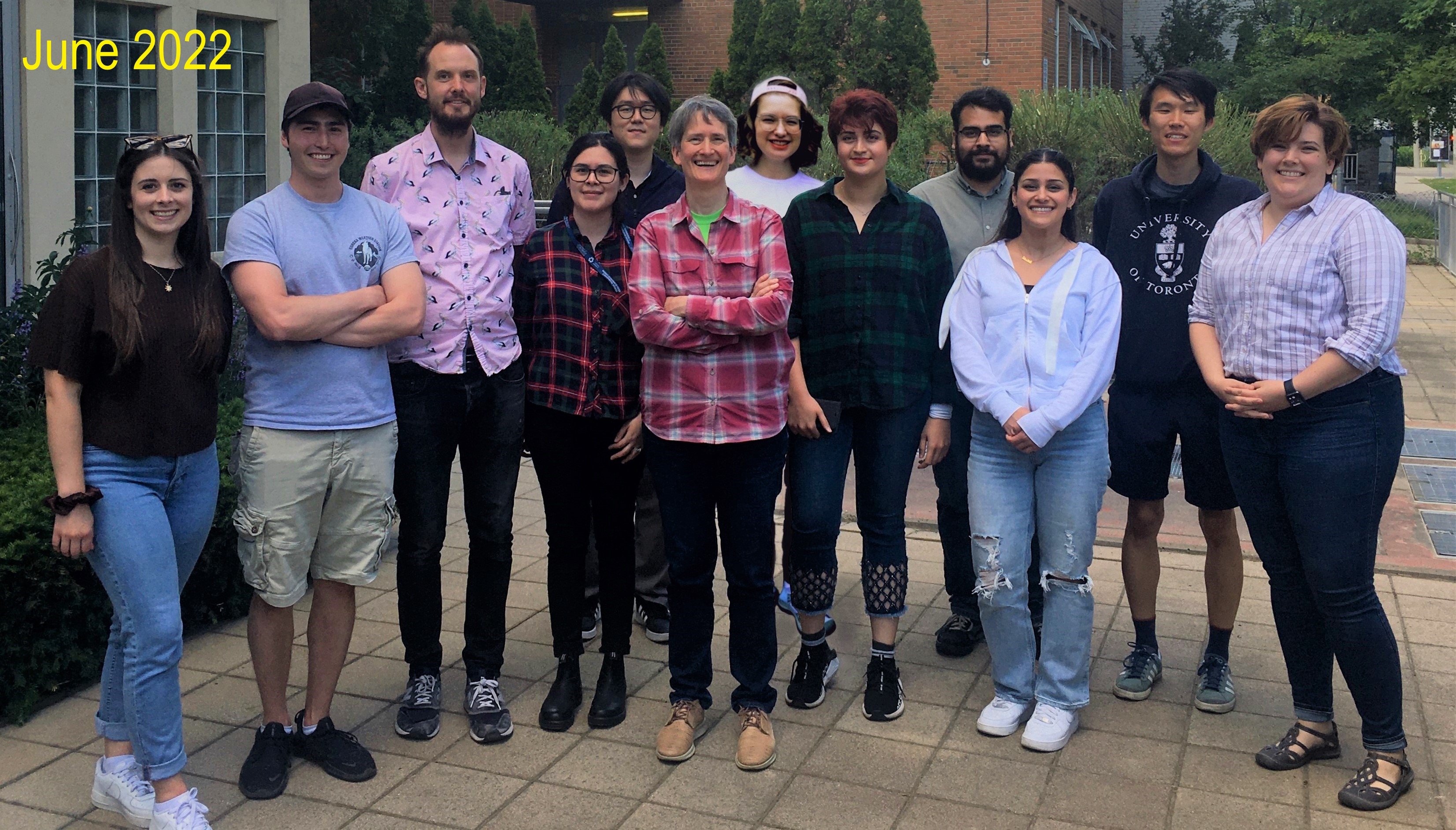
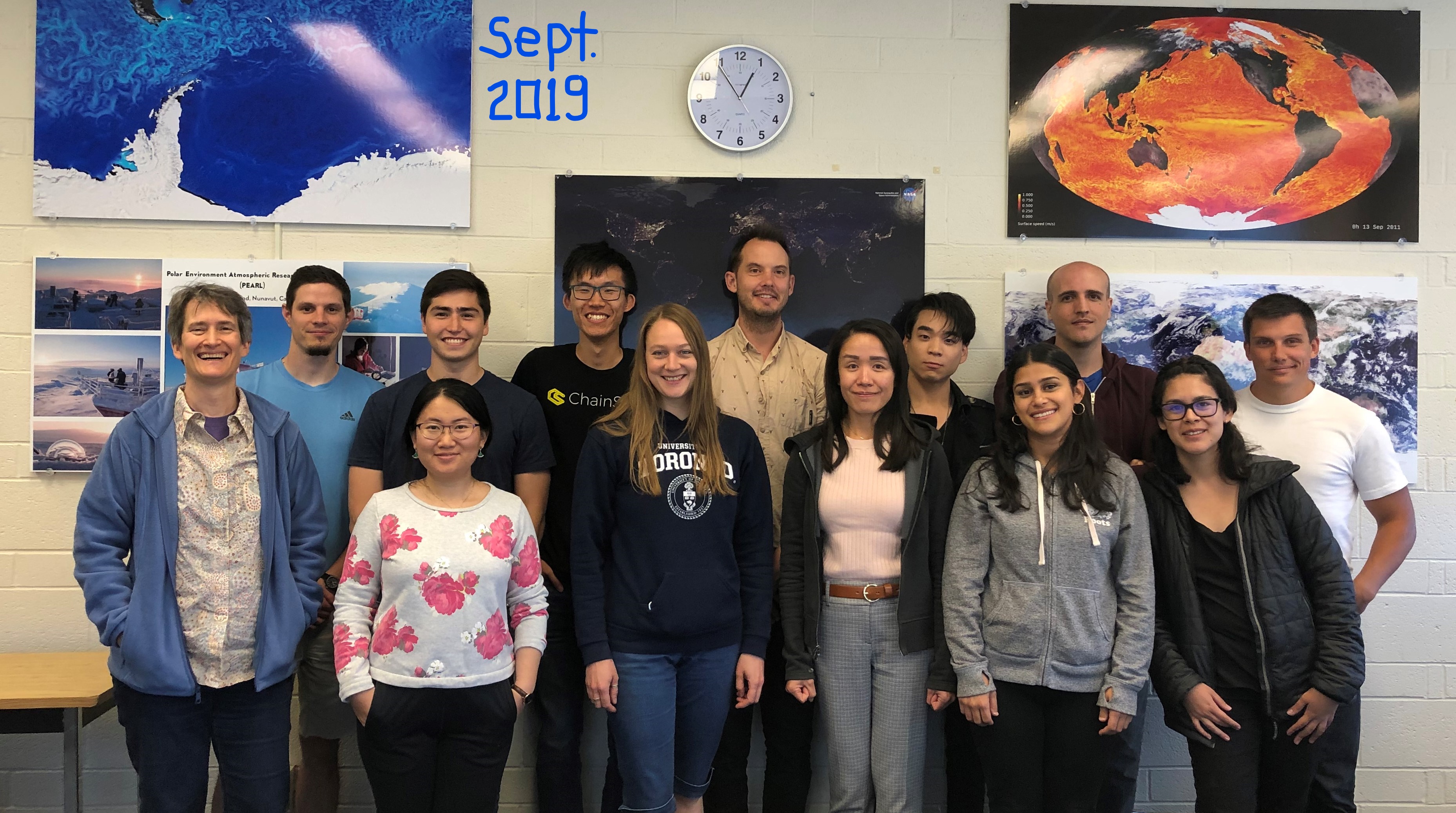
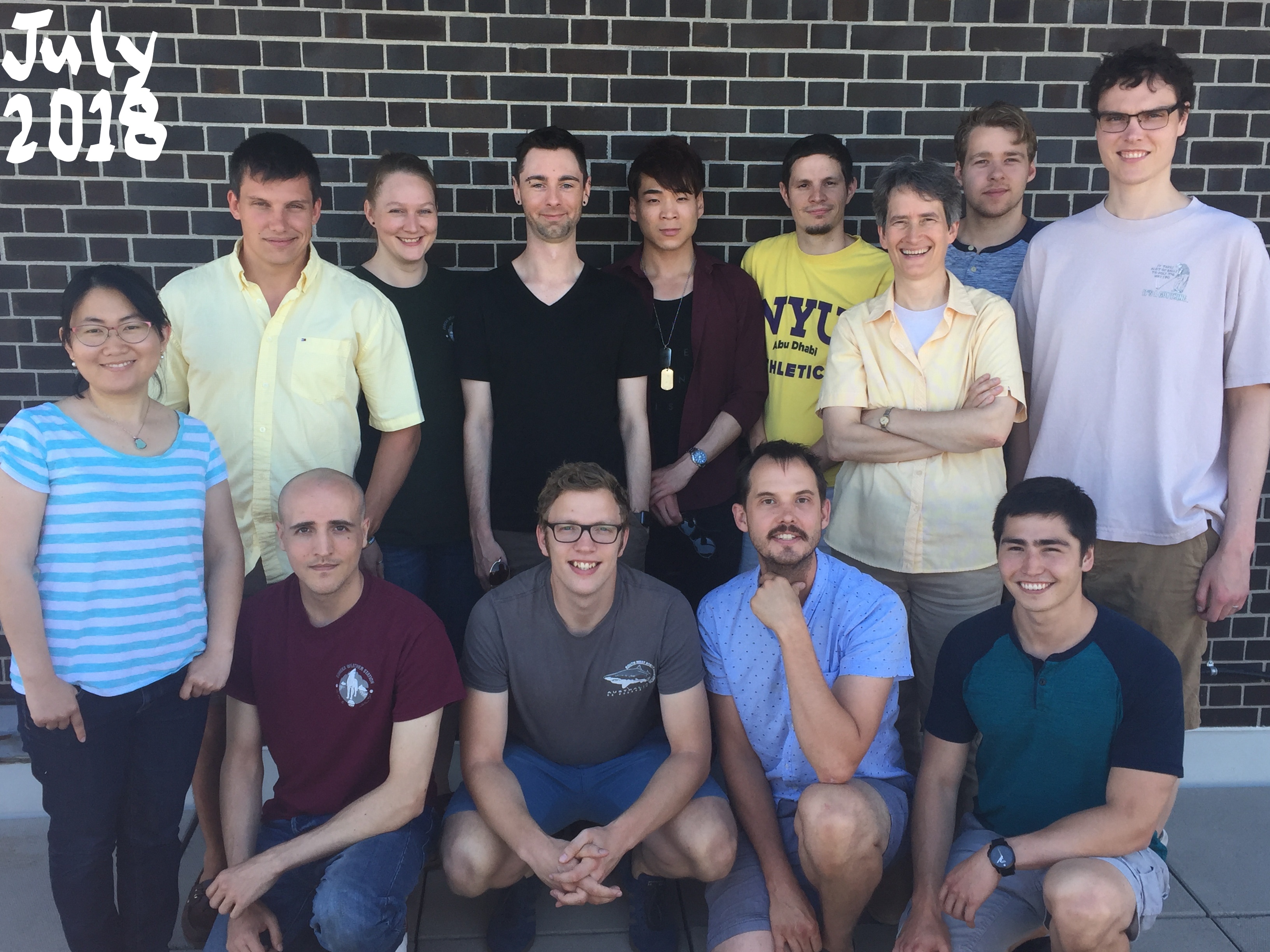
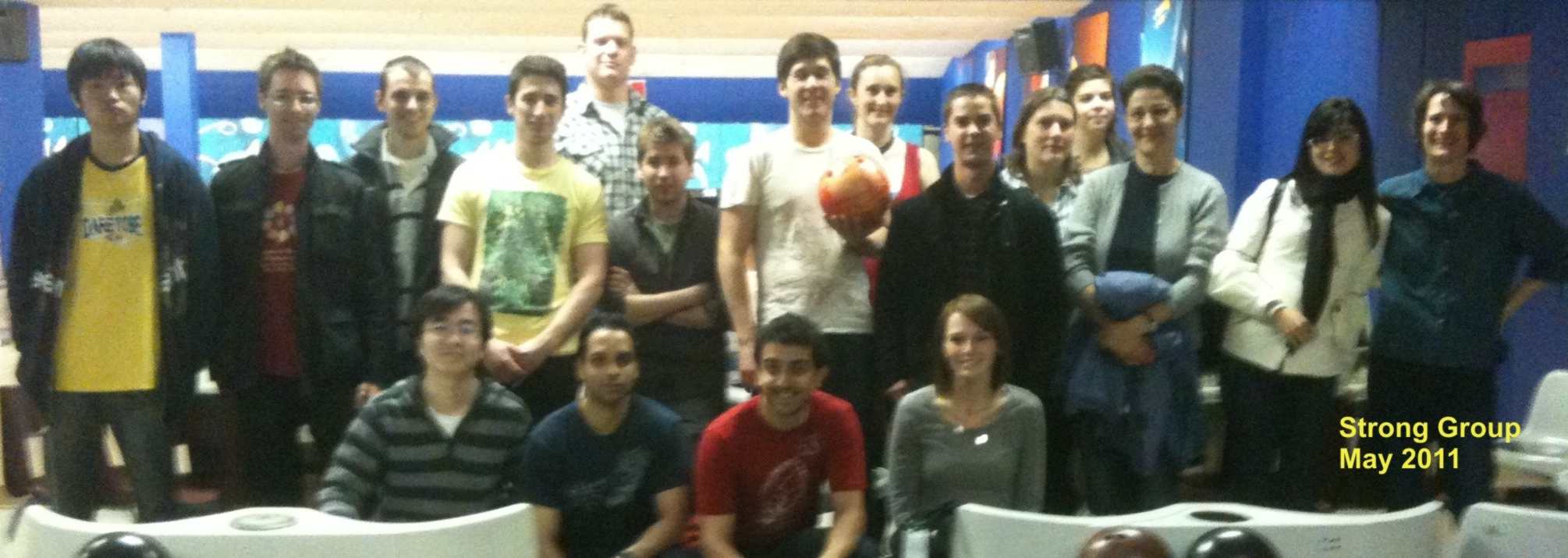
|
Research Interests
My research group uses atmospheric remote sounding from ground-based, balloon-borne, and satellite instruments to measure the concentrations of trace gases for studies of ozone chemistry, climate, and air quality. We currently operate 11 ground-based instruments affiliated with three international observing networks, and two lab-based spectrometers. These instruments are located at urban (Toronto), rural (Egbert), marine (Halifax), and Arctic (Eureka, Cambridge Bay) sites. Our research interests include urban, Arctic, and planetary atmospheric science, long-term measurements of stratospheric and tropospheric trace gases, satellite validation, and laboratory spectroscopy. This is a fascinating and important area of research, as it gives us insight into fundamental atmospheric physics and chemistry, and also has relevance to our interaction with the environment.
My research has been primarily been supported by the the Canadian Foundation for Climate and Atmospheric Sciences (CFCAS), Canada Foundation for Innovation (CFI), the Canadian Space Agency (CSA), Environment and Climate Change Canada (ECCC), the Natural Sciences and Engineering Research Council of Canada (NSERC), the Northern Scientific Training Program (NSTP), the Ontario Research Foundation (ORF), Polar Knowledge Canada, and the University of Toronto.
Current Projects:
 Arctic Atmospheric Science: PEARL/CANDAC and MOACC Arctic Atmospheric Science: PEARL/CANDAC and MOACC
I am one of the founding members of the Canadian Network for the Detection of Atmospheric Change (CANDAC), which established the Polar Environment Atmospheric Research Laboratory (PEARL) at Eureka, Nunavut (80N, 86W) to comprehensively monitor the Arctic atmosphere from the ground to 100 km to study ozone depletion, climate change, and air quality. I was leader of one of our four original research themes (“Arctic Middle Atmosphere Chemistry”), and was subsequently the Deputy PI for Probing the Atmosphere of the High Arctic (PAHA), funded under NSERC’s CCAR program, as well as theme leader for “Composition Measurements”. I am currently the PI for PEARL and lead scientist six of the instruments (Bruker Fourier transform infrared (FTIR) spectrometer, three UV-visible grating spectrometers, Extended-range Atmospheric Emitted Radiance Interferometer, stratospheric ozone lidar). This builds on my previous work at Eureka, which is providing a long-term dataset for studying the evolution of Arctic atmospheric chemistry, with links to the NDACC, TCCON, and PGN networks.
My group first deployed a UV-visible spectrometer in the Arctic in spring 1999 to measure ozone, NO2, and BrO for studies of stratospheric ozone science, and we have played a key role in ensuring the continuity of the spring data record at Eureka. From 2010-2016, I was the Director of the NSERC CREATE Training Program in Arctic Atmospheric Science, which was closely affiliated with PEARL activities. In 2011 and 2020, we contributed to the identification and quantification of severe stratospheric ozone loss in the Arctic using measurements by both the UV-visible and FTIR spectrometers at Eureka. Over the last several years, we have documented the transport of biomass burning products into the Arctic, including the first long-term time series of ammonia in the high Arctic, measured greenhouse gases, implemented new water vapour retrievals, investigated bromine explosion events and their impact on tropospheric ozone, evaluated model simulations of short-lived climate forcers in the Arctic, and contributed to long-term trend studies.
In August 2024, with a new CFI Innovation Fund grant for the Multidisciplinary Observatory for Arctic Climate Change and Extreme Events Monitoring (MOACC) for which I am Co-PI, my group and deployed two instruments at the Canadian High Arctic Research Station (CHARS) in Cambridge Bay, Nunavut (69N, 105W). We installed a Bruker FTIR spectrometer intended for TCCON and a Pandora UV-Visible spectrometer in a container that we had customized by the Arctic Research Foundation and shipped to CHARS. At the same time, a second Pandora was installed at PEARL; with both certified as instruments in the Pandonia Global Network. The MOACC instruments will be used to measure greenhouse gases and air quality to study the carbon cycle, the impact of rapid Arctic climate change, and transport pathways of pollutants into the Arctic, and to validate high-latitude satellite observations.
 Urban, Rural, and Marine Atmospheric Science: TAO, CARE, and SAO Urban, Rural, and Marine Atmospheric Science: TAO, CARE, and SAO

At the University of Toronto Atmospheric Observatory (TAO), we are using solar infrared spectroscopy for long-term measurements of stratospheric and tropospheric trace gases, urban pollution and stratospheric chemistry studies, and satellite validation. We have been operating a Bomem DA8 high-resolution Fourier transform infrared (FTIR) spectrometer at TAO since October 2001. TAO was approved as a Station of the Network for the Detection of Atmospheric Composition Change (NDACC) in March 2004, based on a refereed algorithm and data comparison exercise. TAO data have contributed to validation of satellite data products, the first detection of NO in the mesosphere and lower thermosphere using ground-based FTIR spectroscopy, and studies of chlorine trends, polar intrusions, transport of pollutants and wildfire plumes over Toronto, and attribution of enhanced ethane and methane to the development of oil and natural gas extraction in North America. TAO and PEARL have the only two NDACC FTIR instruments in Canada, and were key sites in the former CAnadian FTir Observing Network (CAFTON), for which I was the PI.
We host an ECCC Pandora spectrometer at TAO and run an Open-Path FTIR to monitor air quality and greenhouse gases in downtown Toronto. This was used to quantify the impact of the COVID-19 pandemic restrictions on trace gas concentrations in the boundary layer. Since April 2023, we have been making regular measurements with a similar DA8 FTIR spectrometer located in a rural location at ECCC’s Centre for Atmospheric Research Experiments (CARE), ~75 km north of Toronto. In October 2024, we installed an Airyx SkySpec-1D UV-visible spectrometer at the St. Mary's University Atmospheric Observatory (SAO) in Halifax to study the marine atmosphere. This instrument was also deployed in the third Cabauw INtercomparison of UV-Vis DOAS Instruments (CINDI-3) campaign in the Netherlands in May-June 2024.
 Infrared Laboratory Spectroscopy Infrared Laboratory Spectroscopy
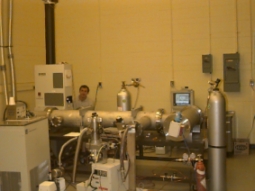
We operate a Laboratory Spectroscopy Facility to measure infrared absorption features of gases of atmospheric interest. Several gas absorption cells, along with transfer optics and heating and cooling systems, have been designed and built. These are coupled to one of two lab-based Bomem DA8 FTIR spectrometers to acquire spectra at high spectral resolution and at temperatures relevant to the atmosphere. We have measured the infrared cross sections of the fluorotelomer alcohols in a previous collaboration with colleagues at Ford Motor Company and Dupont Central Research and Development. We have studied several (hydro)chlorofluorocarbons and a series of other infrared-active fluorinated compounds, motivated by the need for such better information about their absorption cross sections, radiative efficiencies, and global warming potentials. Density functional theory is used to derive theoretical cross-sections for comparison with the experimental data. Our cross-sections have been contributed to the HITRAN database.
We have also measured collision-induced absorption of CH4-CO2 and H2-CO2 complexes at the Canadian Light Source and used them in radiative transfer calculations of the early Mars atmosphere. In related work, we incorporated line mixing and speed dependence into absorption coefficient calculations used in the TCCON algorithm to improve network-wide retrievals of CO2, CH4, and O2.
 Satellite Measurements and Validation Satellite Measurements and Validation
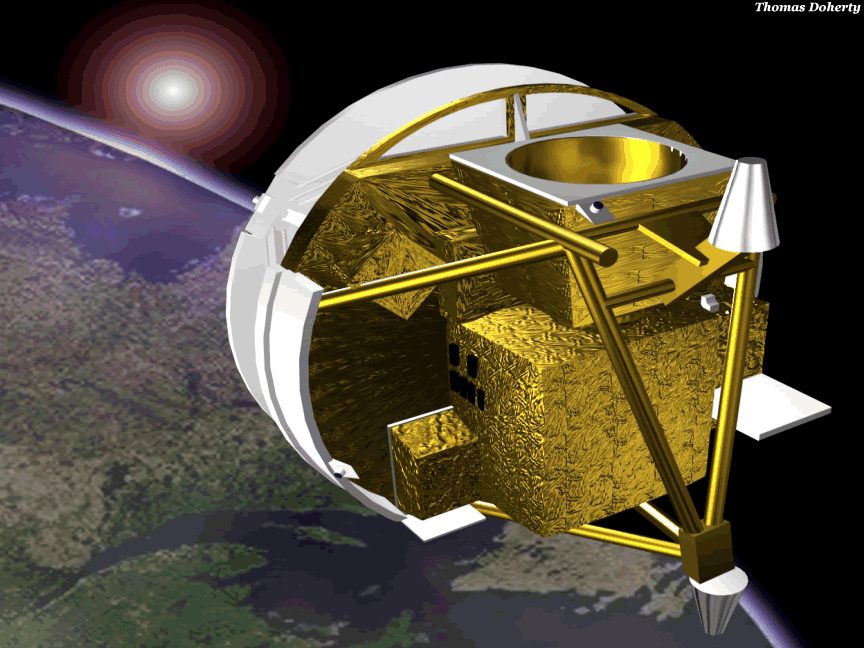 The Canadian Space Agency's Atmospheric Chemistry Experiment (ACE) was launched on the SCISAT satellite in August 2003, carrying the ACE-FTS and MAESTRO instruments, to investigate the chemical and dynamical processes that control the distribution of ozone in the upper troposphere and stratosphere, with a focus on the decline of stratospheric ozone at northern mid-latitudes and in the Arctic. Students and PDFs from my group participated in the pre-launch testing and calibration of ACE-FTS and MAESTRO, which took place at the University of Toronto's Space Instrument Characterization Facility. I have been a Co-I since 1998, as well as co-leader (with ACE Deputy Mission Scientist Kaley Walker) of the ACE validation effort, which resulted in a 2008-2009 special issue of Atmospheric Chemistry and Physics. My interests lie in the assessment and interpretation of the ACE measurements, particularly of the six NOy species, for which I was subgroup leader, and which led to the creation of a global inventory of stratospheric NOy from ACE-FTS data. I am Co-Leader of the ACE/OSIRIS Arctic Validation Campaigns which have taken place at Eureka, Nunavut from February to April every year since 2004. This has resulted in a valuable assessment of the data quality from this mission.
The Canadian Space Agency's Atmospheric Chemistry Experiment (ACE) was launched on the SCISAT satellite in August 2003, carrying the ACE-FTS and MAESTRO instruments, to investigate the chemical and dynamical processes that control the distribution of ozone in the upper troposphere and stratosphere, with a focus on the decline of stratospheric ozone at northern mid-latitudes and in the Arctic. Students and PDFs from my group participated in the pre-launch testing and calibration of ACE-FTS and MAESTRO, which took place at the University of Toronto's Space Instrument Characterization Facility. I have been a Co-I since 1998, as well as co-leader (with ACE Deputy Mission Scientist Kaley Walker) of the ACE validation effort, which resulted in a 2008-2009 special issue of Atmospheric Chemistry and Physics. My interests lie in the assessment and interpretation of the ACE measurements, particularly of the six NOy species, for which I was subgroup leader, and which led to the creation of a global inventory of stratospheric NOy from ACE-FTS data. I am Co-Leader of the ACE/OSIRIS Arctic Validation Campaigns which have taken place at Eureka, Nunavut from February to April every year since 2004. This has resulted in a valuable assessment of the data quality from this mission.
Odin is a Swedish satellite, launched in February 2001, which carries a Canadian Optical Spectrograph and InfraRed Imager (OSIRIS) and a Sub-Millimetre Radiometer (SMR). One goal of the Odin mission is to resolve outstanding questions regarding polar and mid-latitude ozone depletion by making global measurements of the distributions of ozone and trace species. I became a Co-Investigator on the Canadian Aeronomy Science Team in 1997. I was involved in the development of algorithms for the inversion of OSIRIS spectra to retrieve vertical profiles of ozone and NO2. We have compared MANTRA, TAO, PEARL and ACE measurements with OSIRIS and SMR profiles. We also developed a new method to retrieve NO density profiles in the mesosphere-lower thermosphere region from OSIRIS night-time NO2 continuum observations, along with temperature and atomic oxygen density profiles. These data have been compared to similar datasets from SMR and ACE-FTS, and with the CMAM, TIMED-GCM and WACCM models.
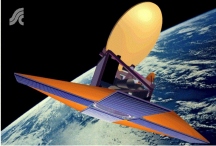 In addition to ACE and OSIRIS, my group has led validation studies for Global Precipitation Measurement mission, used GOSAT flux inversions to constrain anomalies in terrestrial ecosystems, and used a variety of datasets to characterize model errors in chemical transport modelling of CH4. We have contributed our ground-based measurements to validation of data products from multiple satellite missions, including MOPITT, GOSAT, OCO-2, IASI, GOME-2, TROPOMI, OMPS, OMI, and SCIAMACHY. We are also involved in Canada's HAWC (High-altitude Aerosols, Water vapour and Clouds) mission that is planned for launch in several years.
In addition to ACE and OSIRIS, my group has led validation studies for Global Precipitation Measurement mission, used GOSAT flux inversions to constrain anomalies in terrestrial ecosystems, and used a variety of datasets to characterize model errors in chemical transport modelling of CH4. We have contributed our ground-based measurements to validation of data products from multiple satellite missions, including MOPITT, GOSAT, OCO-2, IASI, GOME-2, TROPOMI, OMPS, OMI, and SCIAMACHY. We are also involved in Canada's HAWC (High-altitude Aerosols, Water vapour and Clouds) mission that is planned for launch in several years.
Previous Projects:
 Studies of Planetary Atmospheres Studies of Planetary Atmospheres
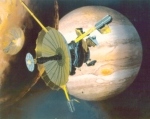
My doctoral research involved near-infrared laboratory spectroscopy of methane in support of the
Galileo mission to
Jupiter. At U of T, my group has been involved in several projects related to better understanding of planetary atmospheres. In one, we worked on the modelling and retrieval of O2 and NO airglow emissions in the atmospheres of Mars and Venus, incorporating results from the Laboratoire de Météorologie Dynamique Mars Global Circulation Model and the University of Michigan Venus Thermospheric general circulation model, quantifying detectable emissions, and comparing with observations from the SPICAM and SPICAV (SPectroscopy for the Investigation of the Atmosphere of Mars / Venus) instruments. Motivated by the possibility of sending an infrared spectrometer to Mars, we developed techniques to retrieve vertical profiles of temperature and trace gases in the dusty, and therefore challenging, Martian atmosphere. In addition, we participated in the Mars Methane Mission, involving two field campaigns held in Quebec in June 2011 and 2012, operating spectrometers to identify methane sources in Martian-like terrains, in collaboration with McGill and industrial partner MPBC. Related to this, we analyzed the expected behaviour of a methane source on Mars, developing a dispersion model, determining current estimates for Martian source strengths, and assessing the spatial limitations for methane detection.
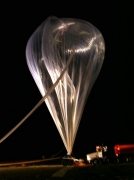
 Middle Atmosphere Nitrogen TRend Assessment (MANTRA) Middle Atmosphere Nitrogen TRend Assessment (MANTRA)
I was the Principal Investigator for this project, which involved the launch of high-altitude balloons from Vanscoy, Saskatchewan in 1998, 2000, 2002, and 2004. Each carried a payload of instruments to measure vertical concentration profiles of stratospheric trace gases. The data have been used to investigate the changing chemical balance of the mid-latitude stratosphere, focussing on ozone, and nitrogen and chlorine compounds that play a role in ozone chemistry. This project was a large collaborative effort involving Co-Investigators from Environment Canada (formerly the Meteorological Service of Canada), the University of Toronto, York University, the University of Waterloo, the University of Denver, the Service d'Aeronomie, CNRS (France), and Scientific Instrumentation Limited.
Scientific Publications
Selected list of papers, with links for download: Click here
PhD theses, with links for download: Click here
Datasets, with links for download: Click here
Research Group Members
- Enquiries welcome!
Former Group Members: Click here
Current Post-Doctoral Fellows and Research Staff:
 |
 Orfeo Colebatch (Research Officer) Orfeo Colebatch (Research Officer) |
 |
 Meike Rotermund (Post-Doctoral Fellow) Meike Rotermund (Post-Doctoral Fellow) |
Current Graduate Students:
 |
 Ramina Alwarda (MSc September 2020; PhD) Ramina Alwarda (MSc September 2020; PhD) |
 |
 Adithi Balaji (MSc) Adithi Balaji (MSc) |
 |
 Darby Bates (PhD) Darby Bates (PhD) |

|  Petra Duff (PhD) Petra Duff (PhD) |

|  Tadhg Hearne (PhD) Tadhg Hearne (PhD) |

|  Joseph Hung (MSc September 2021; PhD) Joseph Hung (MSc September 2021; PhD) |

|  David Huo (MSc) David Huo (MSc) |

|  Osama Ishtiak (MSc September 2021; PhD) Osama Ishtiak (MSc September 2021; PhD) |

|  Kevin Joshy (PhD) Kevin Joshy (PhD) |

|  Erin McGee (PhD) Erin McGee (PhD) |

|  Talha Saeed (PhD) Talha Saeed (PhD) |
 |  Gurmanjot Singh (MSc) Gurmanjot Singh (MSc) |
Current Undergraduate Research Students:
 |
 Cameron Brown, University of Toronto (NSERC USRA, Summer 2025; Research Assistant, Fall 2025) Cameron Brown, University of Toronto (NSERC USRA, Summer 2025; Research Assistant, Fall 2025)
 Kabir Diwansingh, University of Toronto (CGSC Intern, Summer 2025; Research Assistant, 2025) Kabir Diwansingh, University of Toronto (CGSC Intern, Summer 2025; Research Assistant, 2025)
 Japneet Singh, University of Toronto (CGSC Intern, Summer 2025; Research Assistant, Fall 2025) Japneet Singh, University of Toronto (CGSC Intern, Summer 2025; Research Assistant, Fall 2025)
|
Courses Taught
Undergraduate Lecture and Laboratory Courses:
PHY 492F, Advanced Atmospheric Physics (and calendar description) - same as PHY1498
PHY 392S, Physics of Climate (and calendar description)
JPH 441S, Physical Science in Contemporary Society (and calendar description)
PHY 100F, The Magic of Physics (and calendar description)
PHY 132S, Introduction to Physics II - Electromagnetism Section (co-taught) (and calendar description)
PHY 138Y, Physics for the Life Sciences - Electromagnetism Section (co-taught)
PHY 315S, Radiation in Planetary Atmospheres
PHY 305F, Electronics Laboratory I
PHY 325/326/425/426, Modern Physics Laboratory
PHY 140Y, Foundations of Physics
PHY 499S/1499S, Earth Observations from Space
Undergraduate Research and Reading Courses: Enquiries welcome!
PHY 372H, Supervised Reading Course
PHY 472H, Directed Studies - Earth Observations from Space
PHY 299Y, Research Opportunity Program
ESC 499Y, Engineering Science Thesis Project
PHY 478H/479Y, Physics Undergraduate Research Project
Graduate Courses:
PHY 1498F, Introduction to Atmospheric Physics (and calendar description) - same as PHY492
PHY 1830F, Foundation Course in Atmospheric Physics (co-taught)
PHY 499S/1499S, Earth Observations from Space
PHY 2107F, Experimental Methods in Physics (co-taught)
PHY 2501F, Atmospheric Physics - Radiation
PHY 2505S, Atmospheric Radiative Transfer and Remote Sounding
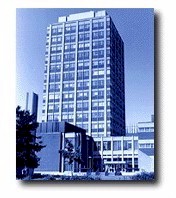
Related WWW Links
Earth, Atmospheric, and Planetary Physics Group
Department of Physics
Centre for Global Change Science
School of the Environment
Faculty of Arts & Science
University of Toronto
For Art Lovers - www.joannastrong.com
This site is maintained by: Kimberly Strong
Last updated: September 2025
|